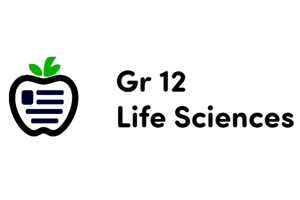Podcast
Questions and Answers
What is the concept described when species remain unchanged for millions of years before a drastic change occurs?
What is the concept described when species remain unchanged for millions of years before a drastic change occurs?
- Mutation
- Natural Selection
- Migration
- Punctuated Equilibrium (correct)
What is the term for a permanent change in a gene or chromosome?
What is the term for a permanent change in a gene or chromosome?
Mutation
What is genetic drift?
What is genetic drift?
Random change in allele frequencies due to chance
What is migration in the context of evolution?
What is migration in the context of evolution?
What does structural adaptation refer to?
What does structural adaptation refer to?
What is behavioral adaptation?
What is behavioral adaptation?
What process increases the population's proportion of individuals better suited to their environment?
What process increases the population's proportion of individuals better suited to their environment?
What is DNA replication?
What is DNA replication?
What is independent assortment?
What is independent assortment?
What are analogous structures?
What are analogous structures?
What are homologous structures?
What are homologous structures?
What term did Charles Darwin coin for the mechanism powering evolution?
What term did Charles Darwin coin for the mechanism powering evolution?
Which of the following statements about mutations is true?
Which of the following statements about mutations is true?
Evolution can result in new species.
Evolution can result in new species.
What pressures drive natural selection?
What pressures drive natural selection?
What is the best example of a structural adaptation?
What is the best example of a structural adaptation?
What is the hibernation behavior of bears an example of?
What is the hibernation behavior of bears an example of?
Which of the following processes is a method of macroevolution?
Which of the following processes is a method of macroevolution?
Which of the following is not an example of a pair of homologous structures?
Which of the following is not an example of a pair of homologous structures?
What is the process by which organisms better suited to their environment survive?
What is the process by which organisms better suited to their environment survive?
Which of the following is an example of analogous structures?
Which of the following is an example of analogous structures?
Which of the following provides an example of homologous structures?
Which of the following provides an example of homologous structures?
The leg of a dog and the flipper of a whale are examples of what?
The leg of a dog and the flipper of a whale are examples of what?
Flashcards are hidden until you start studying
Study Notes
Key Terms in Evolution
-
Punctuated Equilibrium: A theory suggesting periods of stability in species are interrupted by rapid changes leading to new species.
-
Mutation: A permanent alteration in a gene, potentially leading to three types of effects — beneficial, harmful, or neutral; example: mutation in the beta-hemoglobin gene causes sickle cell anemia.
-
Genetic Drift: Random variations in allele frequencies, especially impactful in smaller populations, leading to changes in genetic diversity over generations.
-
Gene Flow: Refers to the movement of individuals and their genetic material between populations, promoting genetic diversity.
-
Structural Adaptation: Inherited physical characteristics that enhance survival; for example, tortoises evolved longer necks to access food.
-
Behavioral Adaptation: Inherited changes in behavior aiding survival; Monarch butterflies' migration as a survival strategy illustrates this adaptation.
-
Natural Selection: The mechanism of evolution where individuals better adapted to their environment survive and reproduce more successfully; example: faster antelopes passing on traits.
-
DNA Replication: The biological process where a cell duplicates its DNA prior to cell division (mitosis), ensuring genetic information is preserved.
-
Independent Assortment: The random arrangement and separation of chromosome pairs during gamete formation, which increases genetic variation.
Structural Comparison in Organisms
-
Analogous Structures: Organisms with similar functions but different anatomical structures; lack a common ancestor, e.g., insect and bird wings.
-
Homologous Structures: Similar bone or organ structures in different species that indicate a common ancestry despite differing functions; e.g., bones in a cat’s leg are structurally similar to those in a whale's fin.
Evolutionary Mechanisms and Concepts
-
Charles Darwin's Natural Selection: The term defining the process of evolution where advantageous traits become more common in a population.
-
Mutations and Evolution: Genetic mutations are the basis for variation in populations and can be beneficial for evolutionary adaptations; they can be inherited and are present in healthy organisms as well.
-
Macroevolution: Large-scale evolutionary changes that can result from processes like genetic drift, migration, and mutation, leading to the emergence of new species.
Behavioral and Structural Adaptations
-
Hibernation: An example of a behavioral adaptation seen in warm-blooded animals like bears, helping them cope with environmental changes during winter.
-
Examples of Structural Adaptations: A parrot's thick beak for cracking nuts showcases a structural change that enhances survival.
-
Identifying Structures: Differentiation between homologous and analogous structures is crucial; for instance, a bird's wing (homologous with similar structure) versus a butterfly's wing (analogous leading to the same function but different origins).
Summary of Natural Selection Principles
-
Over time, natural selection leads to populations becoming better adapted to their environment; individuals less suited to their surroundings face greater survival challenges.
-
Homologous structures indicate common ancestry and differing functions, while analogous structures demonstrate adaptation to similar environmental challenges despite different evolutionary paths.
Studying That Suits You
Use AI to generate personalized quizzes and flashcards to suit your learning preferences.




